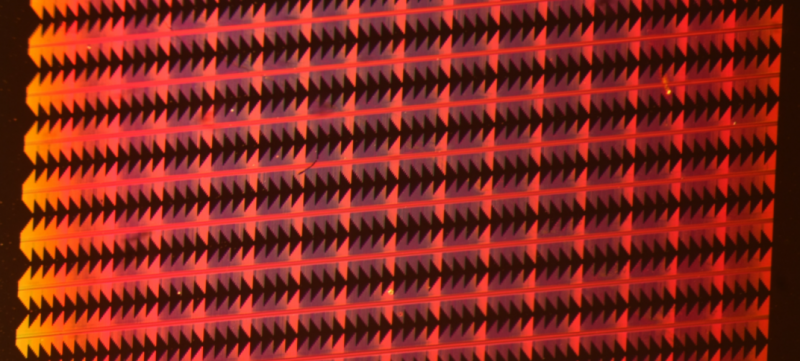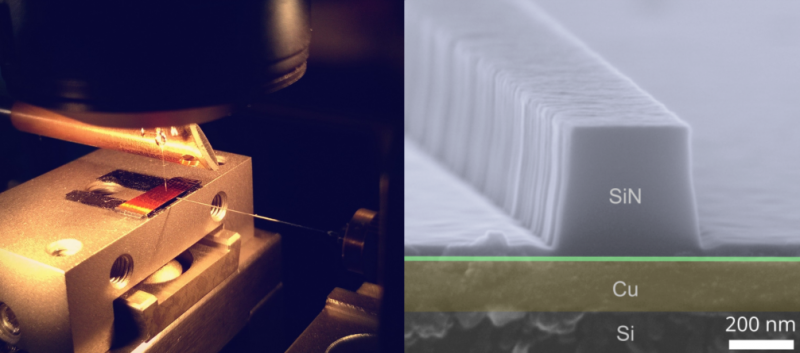Physicists promise a copper revolution in nanophotonics

Researchers from the Moscow Institute of Physics and Technology (MIPT) have for the first time experimentally demonstrated that copper nanophotonic components can operate successfully in photonic devices – it was previously believed that only gold and silver components could do so. Copper components are not only just as good as components based on noble metals; they can also be easily implemented in integrated circuits using industry-standard fabrication processes. "This is a kind of revolution – using copper will solve one of the main problems in nanophotonics," say the authors of the paper. The results have been published in the scientific journal Nano Letters.
The discovery, which is revolutionary for photonics and the computers of the future, was made by researchers from the Laboratory of Nanooptics and Plasmonics at MIPT's Centre of Nanoscale Optoelectronics. They have succeeded, for the first time, in producing copper nanophotonic components, whose characteristics are just as good as those of gold components. It is interesting to note that the scientists fabricated the copper components using the process compatible with the industry-standard manufacturing technologies that are used today to produce modern integrated circuits. This means that in the very near future copper nanophotonic components will form a basis for the development of energy-efficient light sources, ultra-sensitive sensors, as well as high-performance optoelectronic processors with several thousand cores.
The discovery was made under what is known as nanophotonics – a branch of research which aims, among other things, to replace existing components in data processing devices with more modern components by using photons instead of electrons. However, while transistors can be scaled down in size to a few nanometres, the diffraction of light limits the minimum dimensions of photonic components to the size of about the light wavelength (~1 micrometre). Despite the fundamental nature of this so-called diffraction limit, one can overcome it by using metal-dielectric structures to create truly nanoscale photonic components. Firstly, most metals show a negative permittivity at optical frequencies, and light cannot propagate through them, penetrating to a depth of only 25 nanometres. Secondly, light may be converted into surface plasmon polaritons, surface waves propagating along the surface of a metal. This makes it possible to switch from conventional 3D photonics to 2D surface plasmon photonics, which is known as plasmonics. This offers the possibility of controlling light at a scale of around 100 nanometres, i.e., far beyond the diffraction limit.

It was previously believed that only two metals – gold and silver – could be used to build efficient nanophotonic metal-dielectric nanostructures and it was also thought that no other metals could be substituted for these two materials, as they exhibit strong absorption. However, in practice, creating components using gold and silver is not possible because those metals, both noble, do not enter into chemical reactions, and it is therefore extremely difficult, expensive and in many cases impossible to use them to create nanostructures – the basis of modern photonics.
Researchers from MIPT's Laboratory of Nanooptics and Plasmonics have found a solution to the problem. Based on a generalization of the theory for so-called plasmonic metals, in 2012, they found that copper as an optical material can not only compete with gold, it can also be a better alternative. Unlike gold, copper can be easily structured using wet or dry etching. This offers the possibility of making nanoscale components that are easily integrated into silicon photonic or electronic integrated circuits. It took more than two years for the researchers to purchase the required equipment, develop the fabrication process, produce samples, conduct several independent measurements, and confirm this hypothesis experimentally. "As a result, we succeeded in fabricating copper chips with optical properties that are in no way inferior to gold-based chips," says the research leader Dmitry Fedyanin. "Furthermore, we managed to do this in a fabrication process compatible with the CMOS technology, which is the basis for all modern integrated circuits, including microprocessors. It's a kind of revolution in nanophotonics".
The researchers note that the optical properties of thin polycrystalline copper films are determined by their internal structure. The ability to control this structure and consistently reproduce the required parameters in technological cycles is the most difficult task. However, they have managed to solve this problem, demonstrating that it is possible not only to achieve the required properties with copper, but also that this can be done in nanoscale components, which can be integrated with silicon nanoelectronics and silicon nanophotonics. "We conducted ellipsometry of the copper films and then confirmed these results using near-field scanning optical microscopy of the nanostructures. This proves that the properties of copper are not impaired during the whole process of manufacturing nanoscale plasmonic components," says Dmitry Fedyanin.
These studies provide a foundation for the practical use of copper nanophotonic and plasmonic components, which in the very near future will be used to create LEDs, nanolasers, highly sensitive sensors and transducers for mobile devices, and high performance optoelectronic processors with several tens of thousand cores for graphics cards, personal computers, and supercomputers.
More information: Dmitry Yu. Fedyanin et al. Ultralow-Loss CMOS Copper Plasmonic Waveguides, Nano Letters (2016). DOI: 10.1021/acs.nanolett.5b03942
Journal information: Nano Letters
Provided by Moscow Institute of Physics and Technology




















